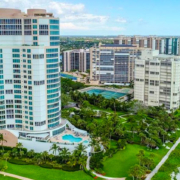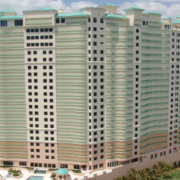Who is going to button down before and clean up after the next hurricane?
We found out from Irma and Wilma that it is not a good idea to have loose items left outside a home or condominium unit and that the power can be out for many days after the hurricane passes. The loose items can blow around damaging themselves and other property and food can rot quickly and appliances leak when the power is out for a prolonged period.
If your part time residents have departed for the year and have no one checking on their home, damage can greatly increase from the next storm. In order to mitigate and minimize such damage, many Associations have now adopted or approved rules and regulations requiring owners to remove all items from their balconies or yards prior to a storm approaching or prior to the owner will be leaving for the summer for a long duration.
Some Associations will even require that the owner designate a “condo or home checker” who will periodically check on the unit over the summer to make sure there are no water leaks and to button down the unit or home before an approaching hurricane. This could include moving anything not nailed down outside on the balcony or yard to the inside of the building, putting pool furniture in the pool, and deploying hurricane shutters. The contact information for the checker should be provided to the Association and the checker could be a paid company or local friend or family member.
The checker could also be required to empty out the fridges and freezers before or after the power goes out to prevent rotting food smelling and leaking from the appliances and resulting mold growth from emanating throughout the home or condominium building.
When the storm is rapidly approaching and Southwest Florida is in the cone, there is usually not much time to button down everything. Usually, there is only a skeleton crew of owners still in residence and limited management personnel (who have not evacuated). Therefore, it is so important that there are condo checkers (additional resources) still around to do the best they can in securing everything.
If an Association has implemented such home checker and button up rules and an owner fails to secure the home before they leave or engage a checker to do so while they are gone, some association’s rules will charge the owner for damage resulting from their negligent act of not preparing their home for the storm or not cleaning out their appliances after the power goes out.
Another important matter to consider is engaging a landscape or tree trimming company before the storm to be on a priority list to be onsite right after the storm to clear debris and tree limbs expeditiously from the property. This could be especially important for folks who are around full time and may have mobility issues making it difficult to come and go. Another priority list that may be good to get on is an inspection and emergency repair list from a superior local roofer.
To alleviate the power outages, there has been a lot of interest in obtaining generators for the condo building or for single family homes. Sometimes an installed permanent building generator can power the entire building or just the elevators and common area lighting. We have been hearing of some condo unit owners wanting to use portable gas generators on their balconies. This would most likely be prohibited as a violation of local fire codes the same as propane grills are not allowed to be used, nor propane tanks stored, less than 10 feet from the multi-family building. An Association should always check with their local fire department prior to allowing any portable generators in or around the buildings.


